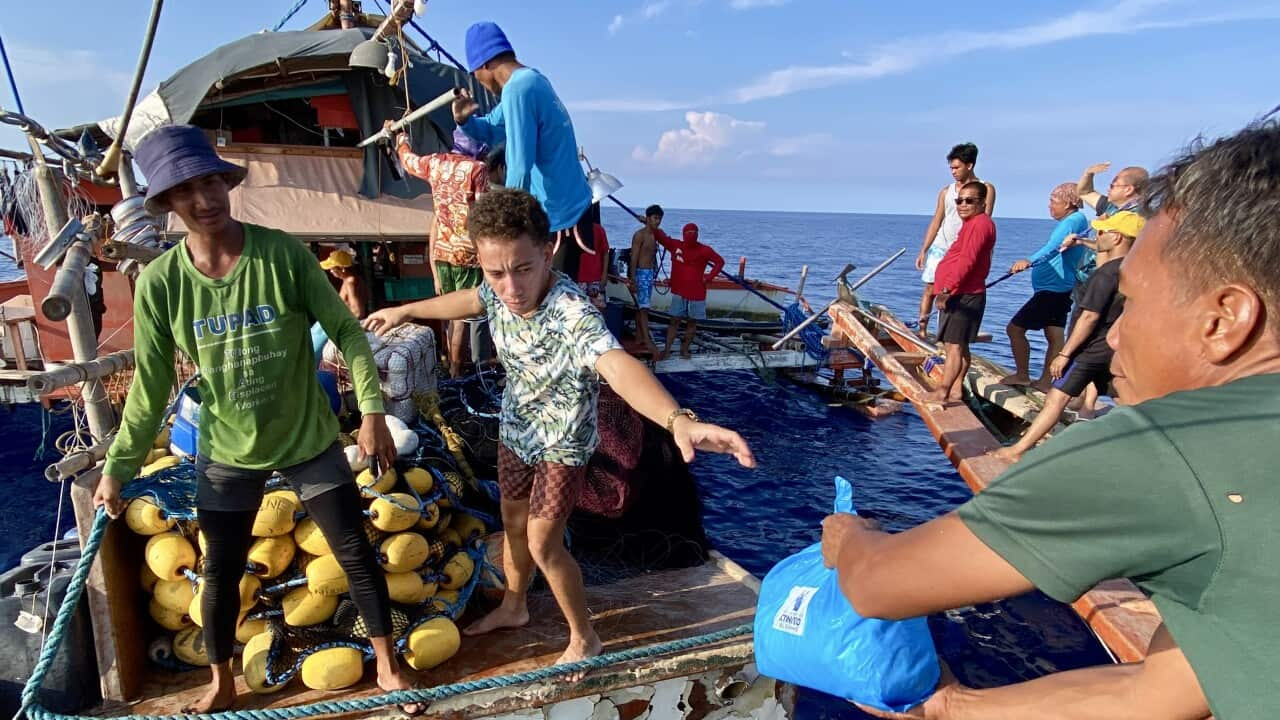Highlights
- The 25th of January marks a year since the first confirmed case of novel coronavirus was recorded in Australia
- While Australia has so far managed to contain the spread of the virus, Professor Kelly concedes mistake have been made
- As for 2021, there's optimism the situation will improve.
A man in his 60's walks into Sydney's Westmead hospital with flu like symptoms.
He's placed into isolation and swabbed for a new mystery virus; on the 25th his test comes back positive. It's one of the first cases in Australia and it was a challenge for Doctor George Zhou's team to treat.
"We didn’t know what kind of treatments we were giving, and there were a lot of treatments that were used overseas which we were trying to incorporate. We didn’t know what was best for the patient at that time."
This man was one of four cases recorded on this day last year. All were travellers from China and within a week, the Prime Minister Scott Morrison had banned visitors from the country altogether.
On February the 3rd came the first of many repatriation flights. 243 Australians evacuated from the virus epicentre, Wuhan, and they were taken to Christmas Island.
As the virus spread, cruise ships became floating hot-spots. The Diamond Princess docked at Yokohama Port off Japan, on February the 4th. All passengers, including hundreds of Australians were quarantined in their rooms.
700 people on board tested positive to the virus, including West Australians Irais and Val Ramalho.
"I just want to lie down and sleep and you know but he was very concerned. Yeah I was really, it was the first time, first time I think I am going to lose her. I had all the symptoms, diarrhea, vomiting I had everything"
The Australian passengers were eventually flown to the Howard Springs mining camp outside Darwin in the Northern Territory. And among them was 78-year-old Perth man James Kwan, who on March the first became the first Australian to die from COVID-19.
Serious mistakes were made too during the pandemic.
On March the 19th, the Ruby Princess docked in Sydney and 2700 people were allowed to disembark, even though a number of sick passengers were waiting for COVID-19 results.
In the coming weeks more than 600 passengers would test positive. 28 would die.
After a damming inquiry, New South Wales Premier Gladys Berejiklian was forced to take responsibility.
On March the 20th, Australia shut its borders to non-residents and non-citizens. And panic buying hit supermarkets, forcing Coles and Woolworths to limit toilet paper purchases. The bare supermarket shelves prompted this outburst from the Prime Minister.
On the 22nd, Australia began the first lockdown with all non-essential services closed. Lines grew outside Centrelink and the Federal Treasurer Josh Frydenberg ended the month by announcing JobKeeper and JobSeeker to fight the economic impact of restrictions.
The lockdown worked and the infection curve flattened for few months before mystery cases started to climb in Victoria. By the end of June, the outbreak there had pushed Australia's daily cases to a peak of 746. With the second wave, came a second rounds of statewide restrictions and eventually the lockdown of Melbourne and the Mitchell shire.
On August the second, Premier Daniel Andrews declared a State of Disaster and metropolitan Melbourne was placed under curfew.
"Whilst I never thought I would be telling people not to go to work, that is what we have to do to stop the spread of this widely infectious virus"
Flaws in the hotel quarantine system were blamed for the second wave of infections. The Victorian Health Minister and two senior public servants eventually resigned over the hotel quarantine scandal.
But on October the 26th, after one of the longest lockdowns in the world ... there was hope. The state recorded zero cases and zero deaths.
But the flare-ups would continue. In November, an outbreak in Adelaide prompted a six day lockdown.
Just before Christmas Sydney's Northern Beaches region was declared a COVID-19 hotspot. And only a week into the new year, a scare about the more-contagious UK variant led Queensland Premier Annastacia Palaszczuk to announce a three day lockdown for Greater Brisbane.
Politicians and health officials are working to beef up defences to stop the highly contagious variant entering Australia, while more than 38,000 Australians are still struggling to get home from overseas.
A national vaccine rollout will begin next month.




